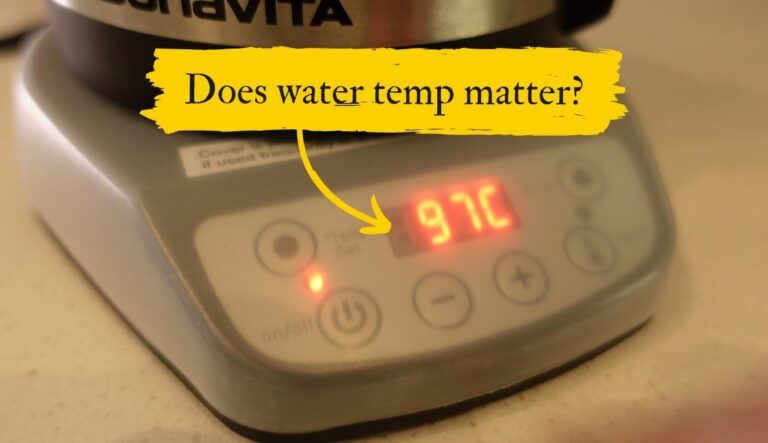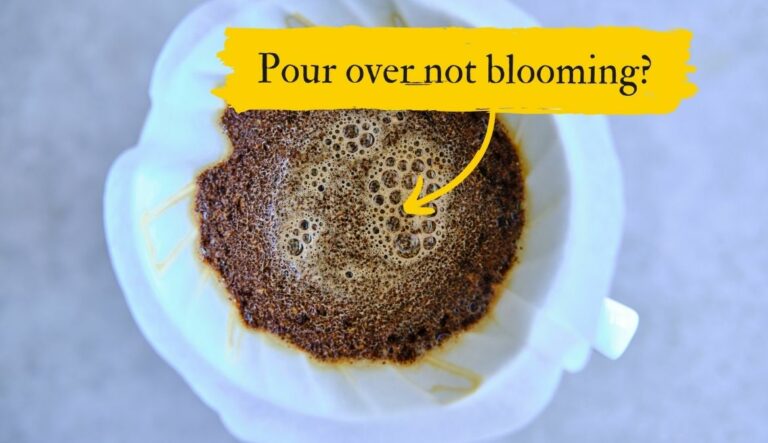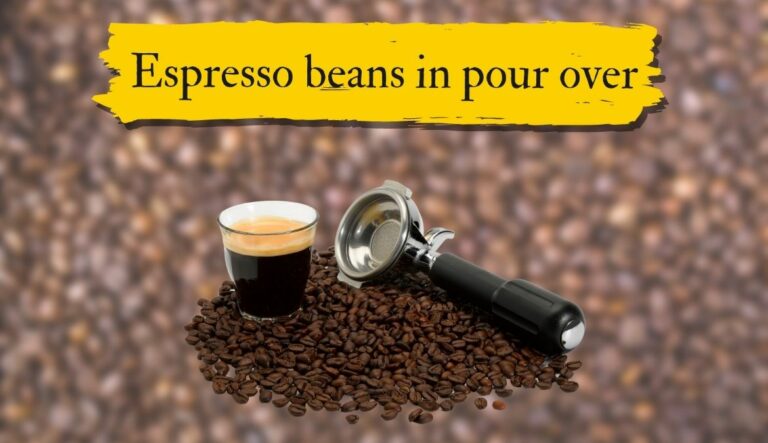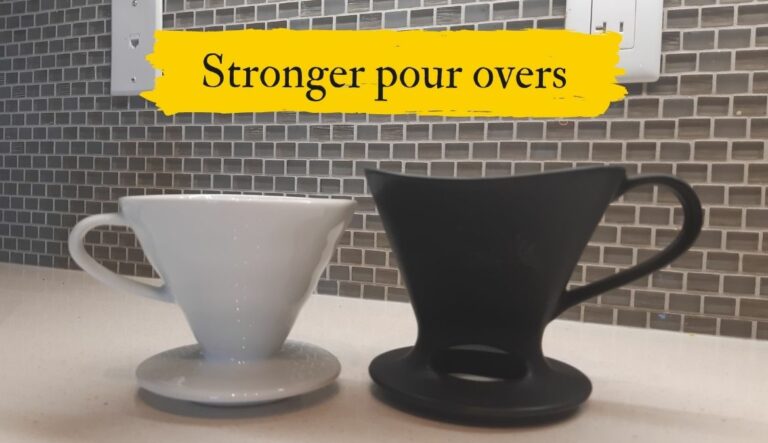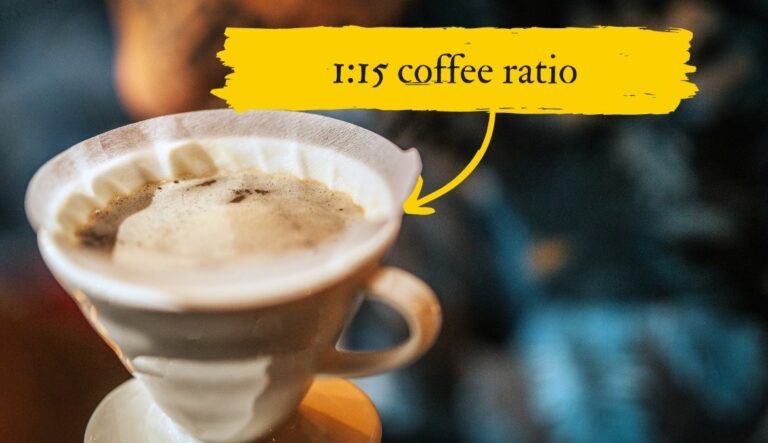The easiest way to dial in pour over coffee is to determine an optimal brew duration based on your pour over model, local water quality and taste preferences. You can then adjust your grind size up or down based on your brew duration being too short or long.
This article will explore the key levers that affect pour over coffee and how to dial in a perfect brew.
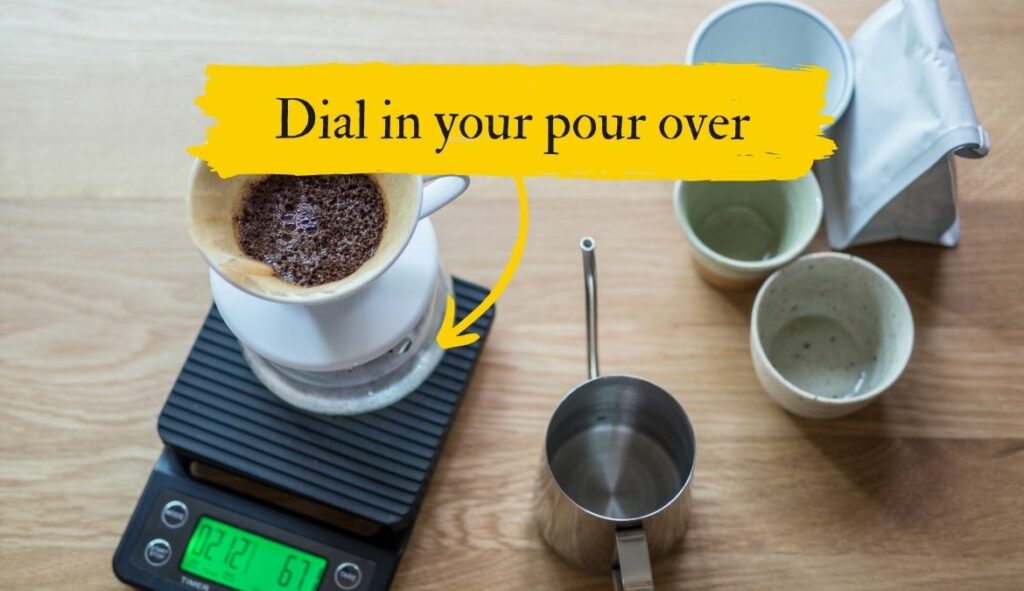
How to determine what’s wrong with your pour over coffee
In our experience, the brew duration is a useful number for understanding your grind size and brew temperature, which are two of the most important factors when brewing pour over coffee.
Grind size affects pour over extraction rate
A coffee’s grind size determines how much surface area contacts water. The greater the surface area, the more quickly the coffee will dissolve (extract) into the beverage. Pour over coffee usually tastes bad when the coffee beans are either under-extracted or over-extracted.
The lipids and acids that chemically make up coffee beans dissolve into water at different rates from one another. Many of these compounds taste bad on their own. But when combined together in the right ratio they make a delicious cup of coffee.
So if you under-extract your coffee it means the beans have not brewed long enough for some of the desirable compounds to dissolve into your beverage yet. Similarly, an over-extracted coffee will contain too much of compounds that ends to add bitter and astringent tastes.
So if your pour over coffee doesn’t taste great, there’s a good chance you aren’t achieving an optimal extraction yield. You can adjust this yield by changing the grind size up or down.
A hotter brew temperature increases extraction rate
Water temperature changes the rate at which soluble compounds in coffee beans can dissolve into water. Hotter water causes extraction to occur more quickly.
It is generally agreed that 199-205°F (93-96°C) is the best pour over brew temperature for achieving an optimal extraction yield.
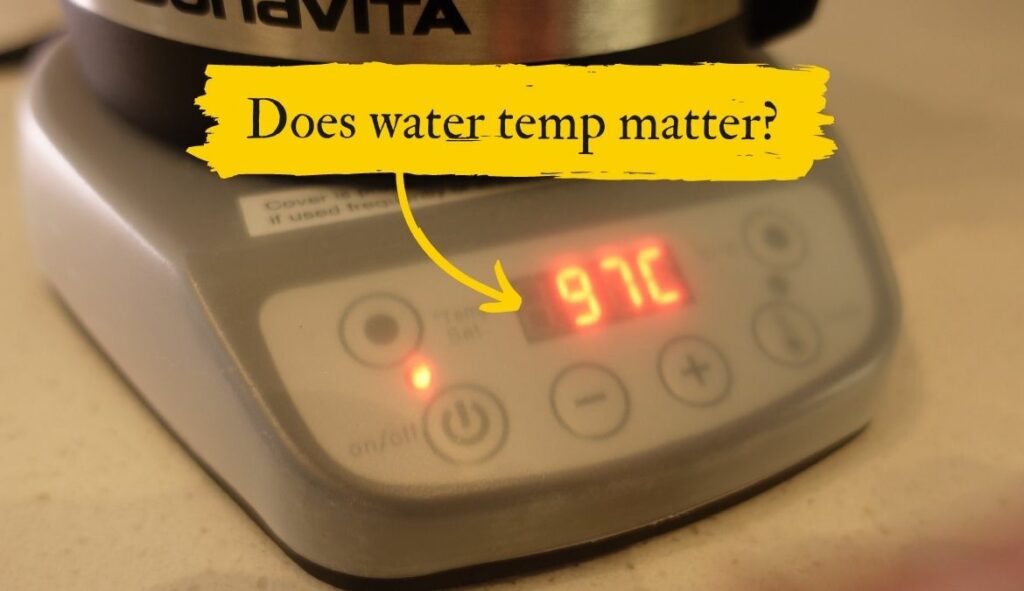
Why is my pour over coffee bitter?
Bitter pour over coffee is a result of an extraction yield above 22%. In other words, by having too many coffee compounds dissolved into the beverage. This over-extraction is usually caused by the grind size being too fine but can also be caused by water that is too hot.
You can prevent bitter pour over coffee by increasing your grind size slightly. You can also try decreasing your brew temperature if it’s above 205°F (96°C) as your hot water may be causing extraction to happen too quickly.
Why is my pour over coffee sour?
Sour pour over coffee is a result of an extraction yield below 18%. In other words, by having too few coffee compounds dissolved into the beverage. This over-extraction is usually caused by the grind size being too coarse or brew temperature being too low.
The solution to sour pour over coffee is by grinding your beans a little finer. If you’re using a manual hand grinder, try bumping the grind size down a step or two.
You can also try increasing your brew temperature if it’s cooler than 199°F (93°C). This will allow extraction to occur more quickly.
How to dial in your pour over method
Make sure you have a consistent pour over brewing method
Make sure you have a consistent procedure when it comes to brew temperature, coffee ratio, pouring technique and brew duration. It will be difficult for you to dial in your pour over coffee if you don’t have a consistent brewing method each time.
Here’s our procedure:
- Boil water to 205°F (96°C);
- Grind 22g of coffee for 330ml of water (1:15 ratio);
- Rinse paper V60 filter with hot water;
- Add ground coffee to rinsed V60, place on mug on scale, tare scale to 0g;
- Pour 44g (2x coffee weight) of water to bloom, wait for 40 seconds;
- Add 100g of water (144g total) in slow circular motion, wait until 1:30 elapsed time; and
- Add remaining 186g (330g total) in slow circular motion, note time when brew is complete. Should be about 3:30 total brew duration.
Your procedure might differ depending on the pour over brand you’re using, your brew temperature and other factors. Brew a few batches with different grind sizes, ratios and brew temperatures until you find a recipe you like best.
One way to do this is to brew until it tastes a little bitter and then increase the grind size a step or two until the bitterness is gone.
Determine your optimal pour over brew duration
After you brew a few cups you should find a recipe and brew duration that produces the best tasting coffee to you. Take note of this recipe and brew duration. You can use future brew durations to determine what changes you need to make to dial in your pour over.
Make adjustments to grind size and temperature based on your brew duration
Consider increasing your grind size (more coarse) if your brew duration is more than 20 seconds longer than your optimal brew duration that was established before.
Each brand of coffee and roast type might produce a slightly different brew duration. We find that we can dial our pour over in by brewing a cup or two and adjusting the grind size up or down a step depending on the brew duration.
Pour over grind size should be slightly coarser than table salt
The ideal pour over grind size is a little more coarse than table salt. This is a rough starting point to start with. It’s best to brew a few cups, taste and make adjustments from there.
Pour over coffee-to-water ratio should be about 1:15
We have found that pour over coffee tastes best with a 1:15 coffee-to-water ratio. However, others suggest that a 1:17 ratio is better for third wave or specialty coffee that has a lighter roast and more nuanced flavors.
Regardless, you can try dialing in your pour over by experimenting with different coffee ratios.
199-205°F (93-96°C) is the best pour over brew temperature
A pour over coffee brewed at 199-205°F (93-96°C) will extract coffee effectively and produce an optimal extraction yield. In other words, it will allow the water to extract between 18-22% of the soluble compounds in the ground coffee beans, which is considered best.
If your pour over tastes bitter and over-extracted then you may consider reducing your brew temperature by a couple degrees to see if that helps. Conversely, you may consider increasing your brew temperature by a couple degrees if your pour over tastes weak or sour.
Water should have a TDS between 100-300ppm
Total dissolved solids (TDS) of 100-300ppm is considered the best water quality for pour over coffee. Studies have shown that water quality affects how oils and acids are extracted from coffee beans.
Each geographic region has a slightly different water composition. Your particular water quality will cause your pour over coffee to taste a little different than someone in another city.
You can dial in your pour over coffee by measuring your water’s TDS and consider increasing or decreasing it if it falls outside of the 100-300ppm range.
How to dial in your pour over beans
Besides your brewing method, you can also dial in your pour over coffee by adjusting the types of beans you buy and use for your coffee making. Here are some of the key factors to consider when buying good pour over beans:
Buy beans that have been roasted within the last 4 weeks
Coffee beans start to stale as soon as they are roasted. Many beans will have lost a substantial amount of aroma and flavor after 5 weeks. We recommend buying beans that have been roasted within the last week if possible, but no more than 4 weeks.
Freshly grind your beans before each brew
Roasted coffee beans lose aroma and flavor due to oxidation. Contact with oxygen causes organic compounds to turn into other compounds, removing these pleasant smells and flavors from your cup of coffee.
Freshly ground beans oxidize more than 8 times more quickly because they have a greater surface area for oxygen to contact. As a result, your pour over coffee will taste much better if you grind beans fresh before each brew.
Grind your pour over beans using a burr grinder
Burr grinders grind coffee beans into more uniform sizes than blade grinders, which pulverize beans into different sizes.
These uniform coffee grinds extract at a consistent rate with each other. This allows you to have greater control over how your pour over coffee taste and will result is more consistent brews.
We prefer steel burr grinders as they seem to produce a more uniform grind than ceramic burrs. But you can’t go wrong with either type.
Choose a roast type that suits your pour over taste preferences
Darker roasted coffee will have roasted, toasted, nutty and chocolate flavors. These are the types of flavors many coffee drinkers enjoy most.
Light roast coffee will more effectively express flavors of the terroir it was grown. In other words, it will take on characteristics of the soil and coffee cherry the bean was grown in. These coffees often have stronger fruit and floral flavors.
Your idea of “dialing in” your pour over may simply be seeking different flavor profiles. In which case, you might benefit from simply choosing a different roast level.
Think about single origin versus blended beans
Similar to the point above, coffees that are single origin will taste much different than blended coffees.
Single origin coffees are simply coffees that are grown and purchased from a single farm. Blended coffees are where coffees from multiple farms, usually multiple countries, are mixed together to create a more balanced and consistent flavor.
Single origin coffees have a more unique taste and can express interesting fruity and floral flavors that can get masked when blended with other origins. Blends have a more balanced amount of acidity, body and overall flavor profile.
Your choice of coffee origin will affect whether or not your particular cup of pour over coffee is right for you.

